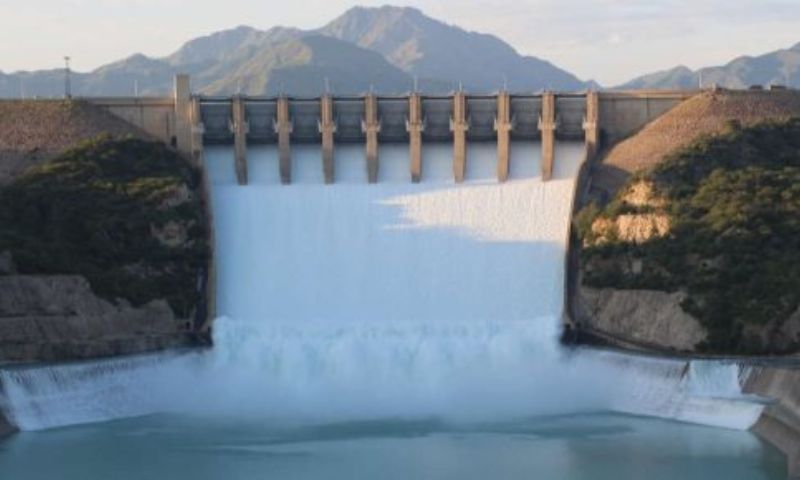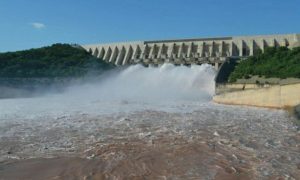ISLAMABAD: Pakistan’s largest reservoir, Tarbela Dam, has reached its maximum conservation level of 1,550 feet above sea level, the Water and Power Development Authority (WAPDA) said on Thursday, as the Indus River swelled to high flood levels at several points downstream.
A WAPDA spokesperson said the Tarbela Dam now holds 5.728 million acre-feet (MAF) of water, its full live storage capacity.
Inflows at Tarbela were recorded at 268,300 cubic feet per second (cusecs), while outflows stood at 238,900 cusecs.
At Mangla Dam, on the Jhelum River, the reservoir has reached 1,217.45 feet – about 74.5 percent of its maximum 1,242-foot capacity – with 5.423 MAF of water stored.
Inflows were 38,600 cusecs compared with outflows of 7,000 cusecs, according to WAPDA figures.
Chashma Barrage on the Indus reported inflows of 403,500 cusecs and outflows of 351,600 cusecs, with the reservoir holding 0.094 MAF.
Overall, Pakistan’s combined water storage across reservoirs stood at 11.245 MAF, the authority said.
Flood conditions have worsened along parts of the Indus River. The river is in high flood at Guddu Barrage and in medium flood at Taunsa and Sukkur barrages, while it remains at low flood at Kalabagh and Chashma.
Flows downstream of Kotri Barrage are below low flood levels.
Tarbela Dam, one of the world’s largest earth- and rock-filled reservoirs, plays a critical role in Pakistan’s water management and energy supply.
Commissioned in 1976, Tarbela has been central to Pakistan’s agricultural and economic development, providing irrigation water during peak demand, generating low-cost hydropower, and mitigating flood risks.

























